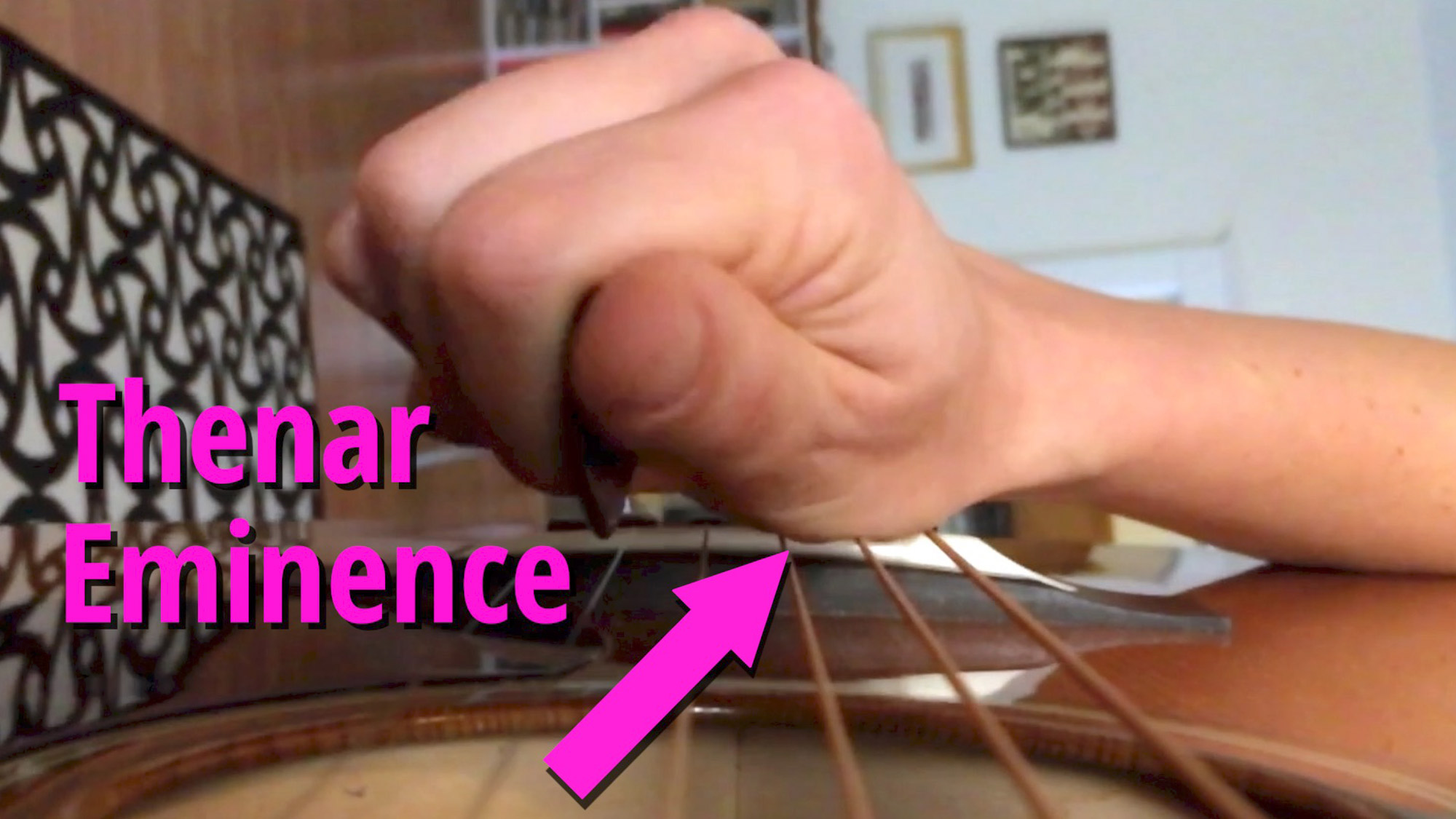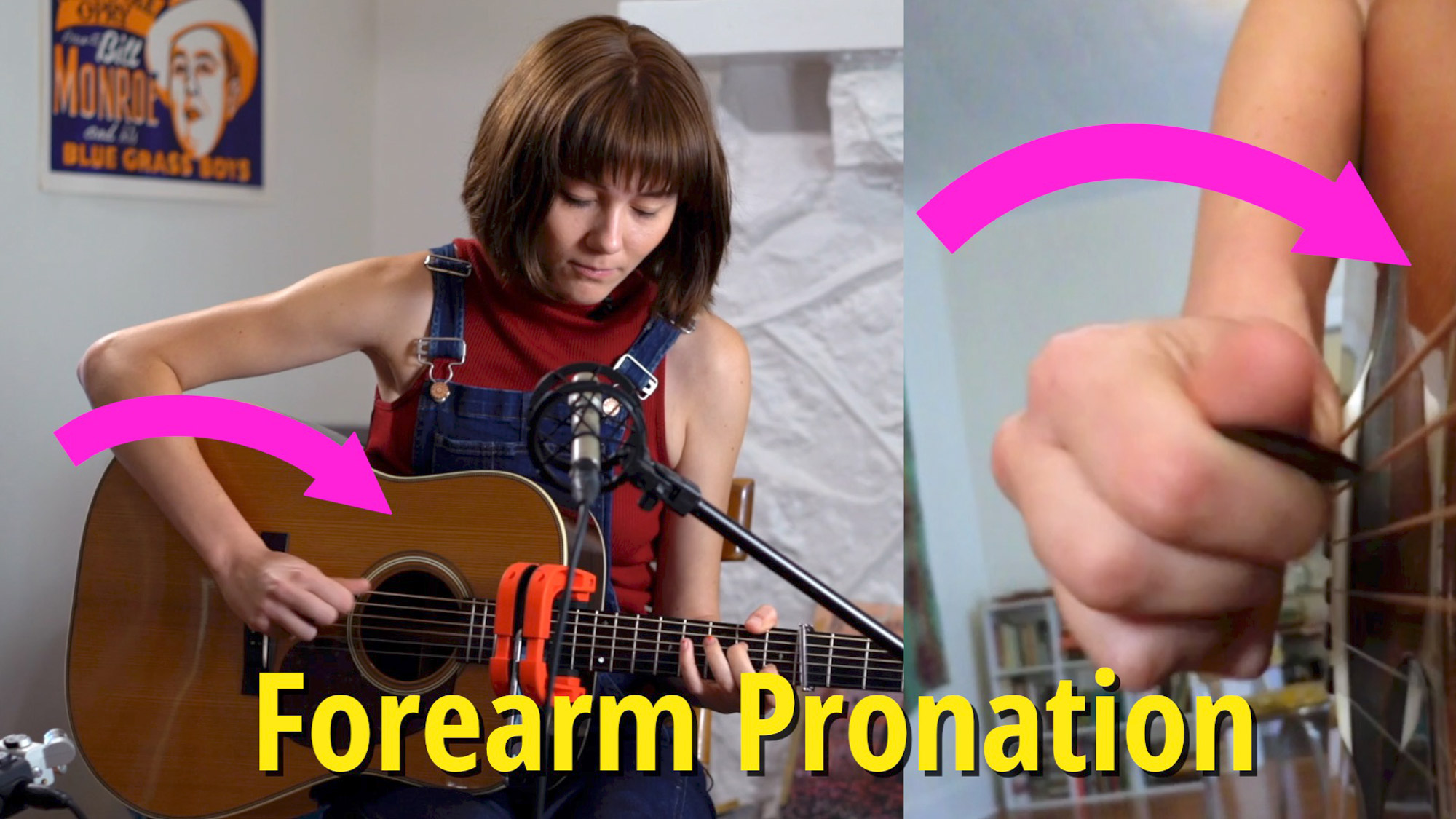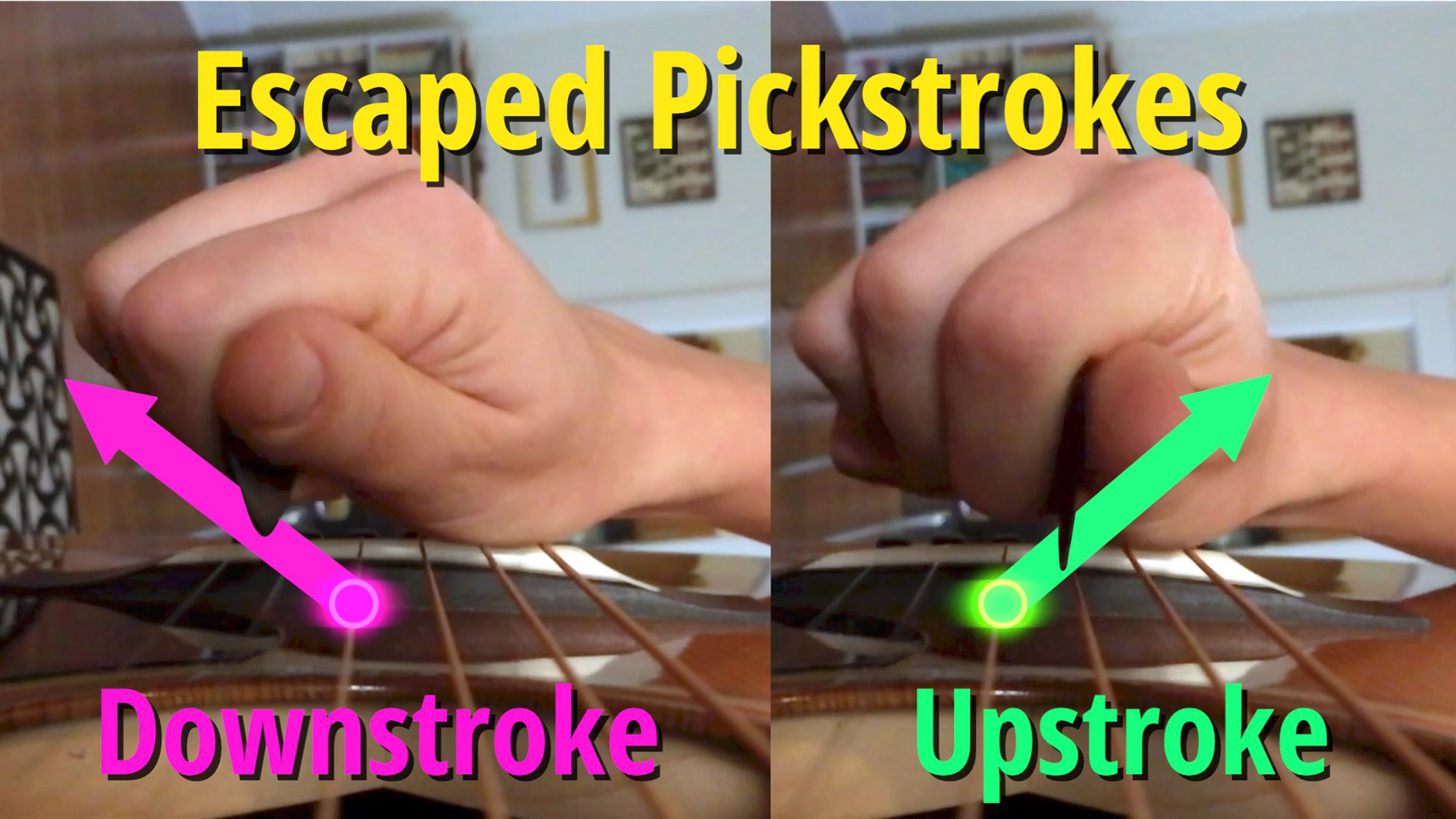Molly Tuttle's Amazing Freightliner Precision
Watching Molly Tuttle switch effortlessly between rhythm comping and high-velocity single-note lead lines is like listening to at least two guitarists at once.
Molly Tuttle's take on the Townes Van Zandt classic "White Freightliner Blues" has quickly become a signature tune, not to mention a showcase for her astonishing flatpicking skills. Watching her switch effortlessly between rhythm comping and high-velocity single-note lead lines is like listening to at least two guitarists at once.
In this clip from her Cracking the Code interview, she gives us a closeup look at the way these two awesome techniques intertwine:
Anchor's Away
Molly Tuttle's right-hand technique is a melding of several uniquely virtuosic picking approaches. For traditional bluegrass "boom chuck" rhythm playing, Molly uses what we might commonly call a "floating" approach. In truth, this is a bit of a misnomer:

As we can see in the closeup shot above, Molly almost always employs a solid forearm anchor against the body. This body anchor acts as a pivot point for the forearm movement, allowing her to quickly cover large distances from bass to treble strings.
Perhaps less obvious is how this anchor promotes accuracy. Even though the body anchor is relatively far away from the strings she is playing, it provides a strong kinesthetic sense of where each string is located in space. This is because the forearm length acts as a multiplier so that only fine muscle activation at the elbow joint is necessary to move the comparatively larger distance across the strings.
Great bluegrass players we have interviewed—including Molly and the amazing David Grier—develop the ability to finely tune those elbow movements to target any string they want. Over the three-plus minutes of "Freightliner's" bustling tempo, we can see just how controllable this seemingly untethered approach really is. In the vast majority of Molly's bass and chord exchanges, the bass downstrokes land squarely on their intended targets.
Pronation Precision
For high-speed single note lines, Molly switches to an anchored wrist mechanic. In the closeup shot, you'll spot it right away:

Now this is really interesting. Molly rests the hand directly on the strings, using the meaty pad where the thumb attaches to the palm as the contact point. In anatomical terms, this is the "thenar eminence" or, more simply, the "thumb heel." The muscles in this part of the palm are responsible for our famously opposable thumbs. They are also responsible for our ability to grip a guitar pick. And that's a great start!
But there's an even more critical reason Molly chooses this anchor point for fast alternate picking. Although it might not be obvious while watching her play from typical audience perspective, in wrist-anchor mode, Molly's forearm is actually "pronated," or rotated inward, toward the guitar's body:

This rotated forearm orientation is what brings her thumb heel in contact with the strings. But this tilted orientation of the arm also completely changes the way Molly's wrist operates:

See that air gap between the knuckles and the strings? That triangular slice of space is what the forearm rotation is doing to the hand. Because of this tilt, Molly's downstrokes now take off at an angle to the guitar, launching right up into the air along the path of the magenta arrow in the snapshot. Conversely, Molly's upstrokes also launch upward, in the opposite direction, along the green arrow.
You can see Molly make these angled picking movements clearly in the slow-motion sequences in the clip. If you're not used to filming bluegrass players in slow motion, movements like this might seem unorthodox. But "escaped pickstrokes," as we call them in Cracking the Code analysis, turn out to be critical to bluegrass guitar. If you don't make escaped pickstrokes, you'll hit the surrounding strings, especially during complicated string switching techniques like roll playing. It is Molly's use of escaped pickstrokes that is the secret sauce of her amazing crosspicking fluency. And it all derives from her pronated arm and thumb heel anchor. Amazing.
Early Intuition
In the interview we discuss the origin of these interlocking mechanics, and amazingly, they were mostly intuitive. In other words, Molly figured all this out through a kind of elite-level trial and error. This type of mechanical intuition is rare. Relatively few players will make these kinds of discoveries without very specific guidance, let alone finely hone them into precision musical tools like Molly's.
That Molly was able to learn these motions mostly on her own is amazing enough. That she is able to switch between them so effortlessly, even while singing, is another. That she can do all this while making music we actually enjoy listening to—well, that's the greatest skill of all.
The complete Molly Tuttle Cracking the Code interview includes tablature for "White Freightliner Blues" along with 41 other slow-motion examples that offer an in-depth look at Molly's astonishing flat pick fluency. Watch it here: troygrady.com/interviews/molly-tuttle/
Get The Pick Newsletter
All the latest guitar news, interviews, lessons, reviews, deals and more, direct to your inbox!
Troy Grady is the creator of Cracking the Code, a documentary series with a unique analytical approach to understanding guitar technique. Melding archival footage, in-depth interviews, painstakingly crafted animation and custom soundtrack, it’s a pop-science investigation of an age-old mystery: Why are some players seemingly super-powered?
“There are so many sounds to be discovered when you get away from using a pick”: Jared James Nichols shows you how to add “snap, crackle and pop” to your playing with banjo rolls and string snaps
Don't let chord inversions bamboozle you. It's simply the case of shuffling the notes around







![Joe Bonamassa [left] wears a deep blue suit and polka-dotted shirt and plays his green refin Strat; the late Irish blues legend Rory Gallagher [right] screams and inflicts some punishment on his heavily worn number one Stratocaster.](https://cdn.mos.cms.futurecdn.net/cw28h7UBcTVfTLs7p7eiLe.jpg)


